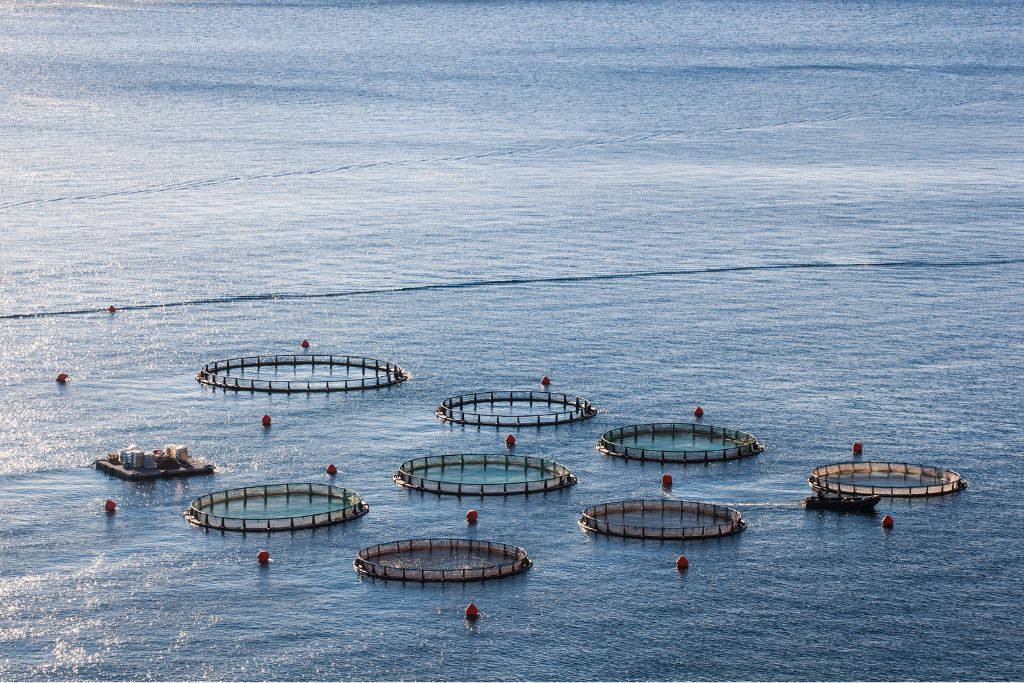It is hard to contextualise the effects of aquaculture on land-based food production. However, maintaining sustainable advancements is imperative for a greener future. Humanity’s number is increasing and – despite the entire world’s population being at risk – every species strives to survive despite climate change. Aquaculture could alleviate some stress, but humankind must employ it sustainably to be a long-lasting solution.
—
Understanding the Role of Aquaculture in Sustainability
Aquaculture, also known as aquafarming, is the controlled cultivation of aquatic organisms such as fish, crustaceans, algae, and various aquatic plants.
The oceans and waterways worldwide are teeming with life and environments perfectly suitable to grow plants and food – so long as the people who monitor them give them care and respect. This will help prevent significant concerns surrounding developing aquacultures, like disease transfer and pollution.
The Ocean Foundation outlines three main types of aquaculture methods and the problems associated with each of them:
- Near-shore open pens: These open cultures for shellfish and salmon make it challenging to control fecal waste, predatorial interactions, and habitat damage. The continued building of these environments down shorelines can contribute to spreading diseases.
- Offshore open pens: These have similar impacts as near-shore pens, but since it takes more resources to place them offshore, they produce more carbon emissions.
- Land-based closed systems: Known as recirculating aquaculture systems, these pens of varied sizes can be sustainable if humans reclaim the water and use renewable resources to power them.
Many factors contribute to the degradation of marine species, such as overfishing. Though numerous coastal nations rely on fishing for nutrition and income, the excess has stressed waters to the point where reform must occur. The road to sustainable aquaculture involves adjusting many human habits while attempting to rebuild and sustain these populations despite using fish as a protein source.
Agriculture already uses much of the world’s fertile land, leaving humans with little room to expand. However, a valuable area lies in the world’s oceans.
Creating farming communities in water will help increase food resilience and production worldwide. Because aquaculture has different needs than land agriculture and is susceptible to varying stressors, it forms a more exhaustive safety blanket for food production.
You might also like: 11 of the Most Endangered Species in the Ocean in 2022
Implementing Changes to Increase Sustainability
Overfishing issues could be solved by inventive farming methods – with three-dimensional farming in the water. Imagine stackable, controlled environments for humans to regulate farming without negatively affecting preexisting ocean ecosystems.
Building up and out instead of deeper has a greater chance of protecting existing biodiversity. If people installed more aquacultures and farmed seafood for protein, it could save a land area two times the size of India farmers would have used for livestock.
One way to create more sustainable and healthier aquaculture is by using technology for maintenance and marine health observation. Plenty of tools on the market provide excellent insights for underwater visuals instead of potentially damaging environments with human divers.
Micro- and macroalgae also create biomass and sequester carbon. While these aquacultures are producing food, they could work double or even triple duty by being multipurpose. Intercropping seaweed, for example, would provide more benefits than just a straightforward farm by absorbing emissions and creating net-zero farming solutions.
Advancing Aquaculture Worldwide
When the World Wildlife Fund (WWF) discussed the path forward for aquaculture, they connected important themes for it to progress successfully:
- Importance of collaboration
- Innovation of sustainable technologies
- Lacking investments and funding
- Increase in consumer awareness
- Incentives for transparency and efficiency improvements
Norway’s Minister of Fisheries and Ocean Policy is discussing governmental intervention to improve sustainable aquaculture. Their perspective is to create an environment to allow future generations to fish at the current rate – but if changes do not happen, this will be impossible.
Some of their priorities include raising awareness of fish welfare and reducing carbon footprints by sourcing materials for aquacultures locally. This only happens because discourse remains open between all parties — government, research, and industry alike.
Silicon Valley investors in the United States are also attempting to experiment with aquaculture startups. One includes Vertical Oceans, which is experimenting with stacking aquacultures in urban settings to solve a wasteful supply chain problem.
The World Economic Forum has also compiled comprehensive research and solutions for a more sustainable future for aquaculture. It includes opportunities for growing technology, supporting salmon recovery in geologically prone areas, and considerations for more overarching governance.
Increased Sustainability in Aquaculture
The more people focus on developing sustainable aquaculture, the more likely humanity is to diversify food production. Not only does aquaculture provide new habitats for farmers to grow plants and aquatic life, but it also minimizes risk to food sources, creates work, and decreases chances of hunger as more food is ethically produced.
The road ahead for sustainable aquaculture has many faces, from stackable environments to remote technological maintenance. Innovation provides a better chance of creating an optimal aquaculture model.
You might also like: 7 Solutions to Overfishing We Need Right Now


















